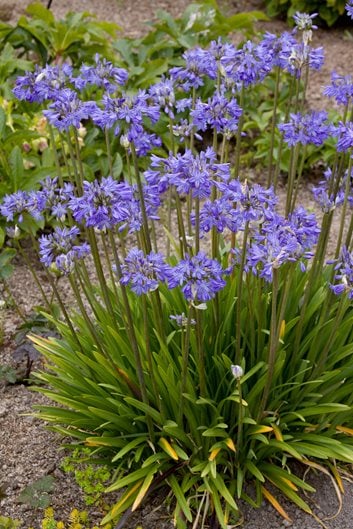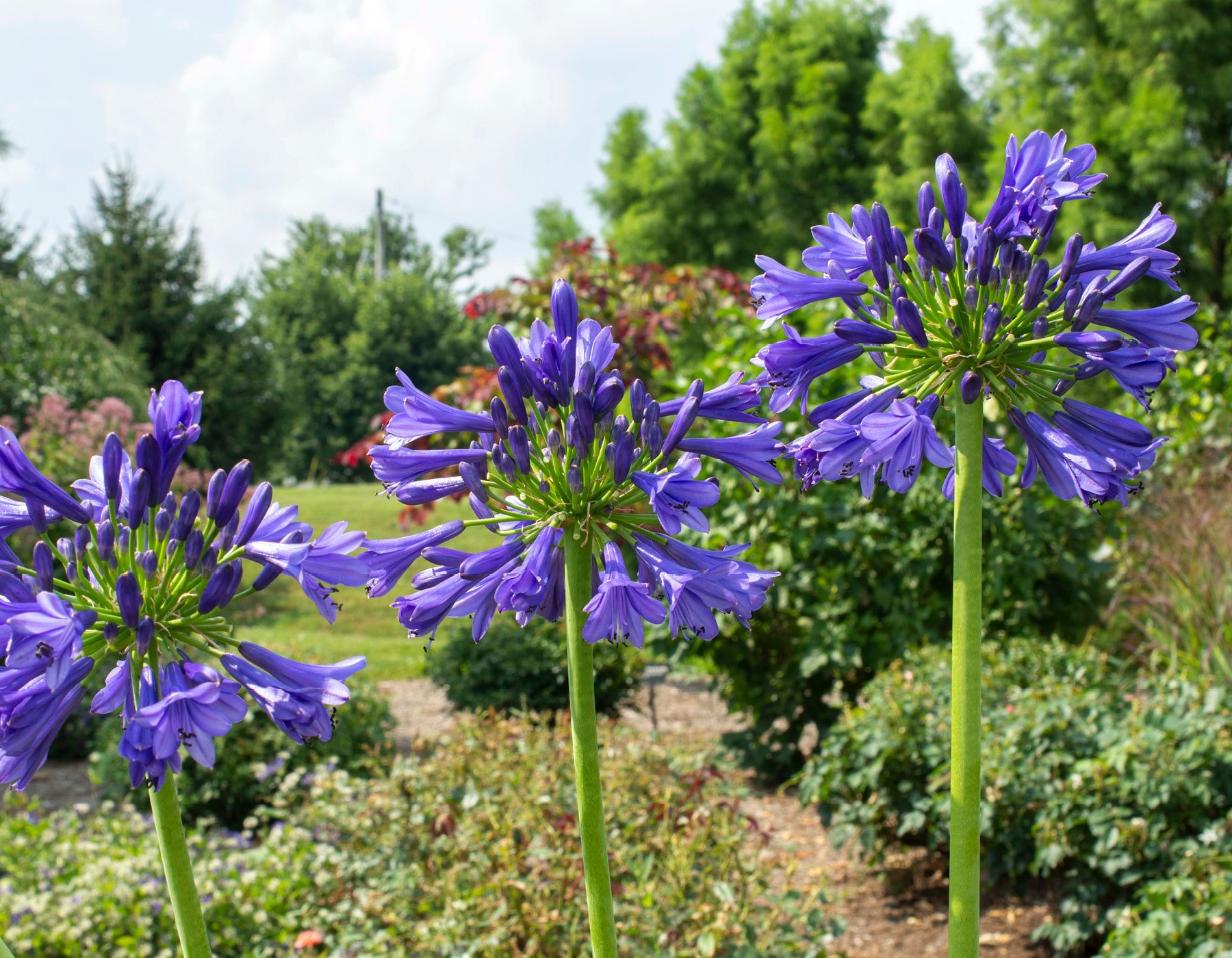Expanding Agapanthus: A Full Overview to Beautiful Blooms
Expanding Agapanthus: A Full Overview to Beautiful Blooms
Blog Article
Unleashing the Secret to Successful Agapanthus Farming: Tips and Techniques for a Flourishing Garden
In the realm of gardening, cultivating agapanthus efficiently needs a calculated method that includes various facets of plant care. By comprehending the nuances of agapanthus growing, one can produce an atmosphere where these plants flourish and bloom abundantly.
Planting Agapanthus: Finest Practices
When growing Agapanthus, proper dirt preparation is necessary for making certain successful growth and advancement of these stunning flowers. Agapanthus, commonly called Lily of the Nile or African lily, prospers in well-draining dirt with a somewhat acidic to neutral pH level - Agapanthus. Prior to planting, it is important to amend hefty clay soils with raw material such as garden compost or peat moss to enhance water drainage and give important nutrients for the plants
To plant Agapanthus, choose a location that receives complete sunshine to partial color, as this will promote healthy growth and abundant flowering. Dig an opening twice the diameter of the plant's root ball and place the Agapanthus at the same deepness it was formerly growing. Carefully backfill the hole with soil, weighing down strongly to get rid of any type of air pockets around the roots.
Water the newly planted Agapanthus extensively and remain to maintain the soil evenly wet, especially throughout the plant's active expanding period. Agapanthus. Using a balanced fertilizer once a month can further sustain the plant's development and flowering. By following these ideal methods for planting Agapanthus, you can create a sensational screen of these fascinating flowers in your garden
Perfect Dirt Conditions for Agapanthus
For optimum growth and growing success of Agapanthus plants, guaranteeing the dirt conditions are optimal is essential. Agapanthus likes soil that is abundant in nutrients, so incorporating a balanced fertilizer throughout the growing period can advertise healthy development and vibrant flowers.

Watering and Fertilizing Tips
To ensure healthy growth and vibrant blooms, proper watering and fertilizing techniques are important for successful Agapanthus cultivation. Agapanthus plants gain from normal watering, specifically during the growing season. It is recommended to water deeply as soon as a week, ensuring the dirt is wet yet not soaked. Throughout heat or in pots, more frequent watering might be essential to avoid the dirt from drying out entirely.
When it concerns feeding Agapanthus, a balanced fertilizer with equal components nitrogen, phosphorus, and potassium can be applied in the spring to advertise healthy development and blooming. Slow-release fertilizers are perfect for offering nutrients gradually over an extensive duration. Avoid over-fertilizing, as this can lead to too much foliage development at the cost of blooms.
In addition, integrating organic issue like compost right into the soil can boost nutrient levels and enhance soil framework, helping in the overall health and wellness of the Agapanthus plants. By adhering to these watering and fertilizing pointers, garden enthusiasts can ensure their Agapanthus plants flourish and generate magnificent display screens of blossoms.
Trimming and Deadheading Strategies
Appropriate pruning and deadheading techniques play a vital function in preserving the wellness and visual appeals of Agapanthus plants, complementing the vital techniques of watering and feeding for successful growing. Trimming Agapanthus entails getting rid of invested flower heads, yellowing or dead fallen leaves, and total shaping of the plant to advertise much better development. Deadheading, the process of getting rid of discolored blossoms, not only improves the plant's look however additionally encourages additional growing.
When deadheading Agapanthus, it is recommended to trim off the flower stem at the base utilizing sharp, tidy shears. This procedure redirects the plant's energy from seed manufacturing back right into root and vegetation development, promoting a much healthier and more robust plant. Routine deadheading view can expand the blooming period of Agapanthus and prevent self-seeding, which can result in congestion.
In terms of pruning, Agapanthus normally advantages from a light trim after blooming to clean up the plant and motivate fresh growth. Cutting down the invested blossom stems and getting rid of any damaged or dead vegetation aids keep the plant's vitality and overall appearance. However, it is necessary to stay clear of reducing into the crown of the plant, as this can weaken its health and wellness.

Protecting Agapanthus From Vermins and Diseases
Carrying out efficient pest and condition administration techniques is essential check my blog to safeguarding the health and wellness and vitality of Agapanthus plants in growing. One common parasite that impacts Agapanthus is the Agapanthus borer, a caterpillar that tunnels right into the plant, triggering damage to the blossoms and leaves.
In enhancement to bugs, Agapanthus are at risk to diseases such as root rot and fungal fallen leave places. By staying watchful and attending to pest and disease issues promptly, gardeners can assist their Agapanthus grow and flourish.

Verdict
Finally, effective farming of agapanthus calls for correct growing strategies, ideal soil conditions, adequate watering and feeding, regular trimming and deadheading, and defense from parasites and conditions. By adhering to these techniques and investigate this site ideas, gardeners can guarantee a growing garden loaded with beautiful agapanthus blooms. Agapanthus. Bear in mind to keep constant care and attention to information to advertise the health and wellness and durability of these spectacular plants
When planting Agapanthus, correct dirt preparation is important for ensuring effective development and development of these lovely blossoms.Water the recently grown Agapanthus thoroughly and continue to maintain the soil evenly wet, particularly during the plant's active expanding season.For ideal growth and growing success of Agapanthus plants, making sure the soil problems are suitable is important. When planting or hair transplanting Agapanthus, make sure the soil is well-prepared to provide the necessary foundation for the plants to develop themselves efficiently. One usual parasite that affects Agapanthus is the Agapanthus borer, a caterpillar that passages into the plant, creating damages to the flowers and leaves.
Report this page